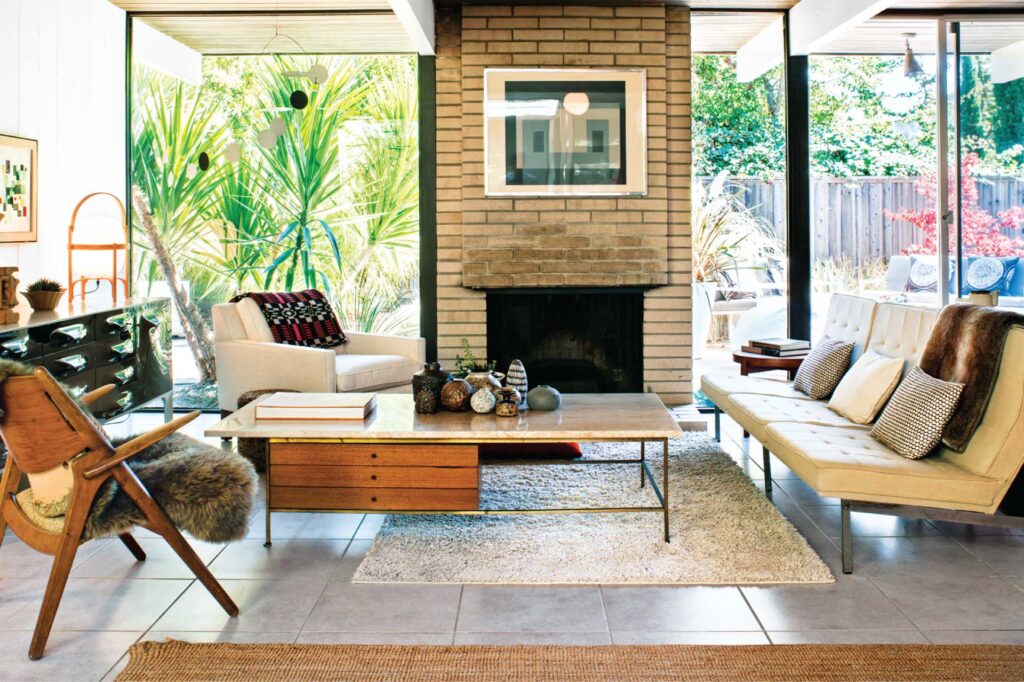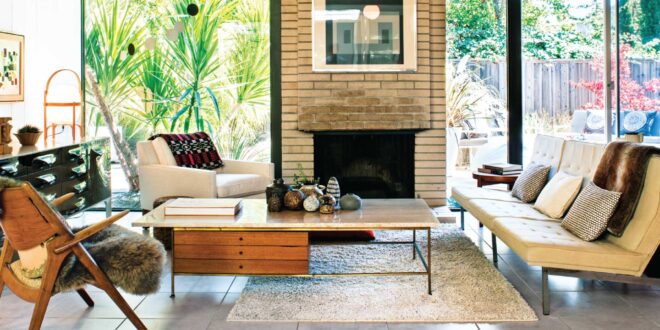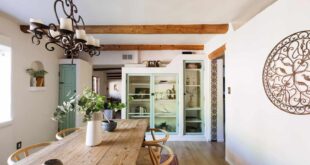
Mid-Century Modern: A Timeless Design Movement
Mid-century modern design, a style that emerged in the aftermath of World War II, continues to captivate designers and homeowners alike. Characterized by clean lines, organic shapes, and a focus on functionality, mid-century modern represents a pivotal moment in design history. This article explores the origins, key characteristics, enduring appeal, and modern interpretations of mid-century modern design.
Origins and Influences
The mid-century modern movement flourished from the mid-1940s to the 1960s, drawing inspiration from various sources. The Bauhaus school, with its emphasis on functionalism and simplicity, played a significant role. Scandinavian design, known for its use of natural materials and minimalist aesthetic, also contributed to the movement’s development. The post-war era’s optimism and technological advancements further fueled innovation in design.
Key Figures
Several designers and architects shaped the mid-century modern aesthetic. Charles and Ray Eames, renowned for their iconic furniture pieces, experimented with molded plywood and fiberglass. Eero Saarinen, known for his Tulip chair and the TWA Flight Center, embraced organic forms and innovative materials. George Nelson, another influential designer, created a range of furniture and accessories that embodied the movement’s spirit. These figures, among others, left an indelible mark on the design landscape.
Characteristics of Mid-Century Modern Design
Mid-century modern design is defined by several key characteristics:
- Clean Lines: Simplicity and clarity are paramount. Furniture and architectural elements feature clean, uncluttered lines.
- Organic Shapes: In contrast to the rigid geometry of earlier styles, mid-century modern incorporates organic and curvilinear forms.
- Functionality: Design prioritizes practicality and usability. Form follows function, with every element serving a purpose.
- Natural Materials: Wood, particularly teak, walnut, and oak, is widely used. Other natural materials, such as leather, wool, and cotton, also feature prominently.
- Minimalism: Ornamentation is kept to a minimum. The focus is on essential forms and materials.
- Integration with Nature: Large windows and open floor plans connect interior spaces with the outdoors.
- Bold Colors: While muted tones are common, mid-century modern also embraces bold colors, such as avocado green, mustard yellow, and orange.
Enduring Appeal
The popularity of mid-century modern design has endured for several reasons. Its timeless aesthetic transcends fleeting trends. The emphasis on functionality and comfort makes it well-suited to modern living. The use of natural materials creates a warm and inviting atmosphere. Furthermore, the movement’s historical significance and association with a period of optimism and innovation contribute to its appeal. The designs created during this era remain relevant and adaptable to contemporary tastes. Many appreciate the simplicity and elegance of mid-century modern furniture, finding it both aesthetically pleasing and highly functional.
Furniture Design
Mid-century modern furniture is instantly recognizable for its sleek silhouettes and use of materials like molded plywood, fiberglass, and metal. The Eames Lounge Chair, the Saarinen Tulip Chair, and the Nelson Platform Bench are just a few examples of iconic pieces that continue to be highly sought after. These designs are not only visually appealing but also ergonomically sound, providing both comfort and style.
Architectural Elements
Mid-century modern architecture often features open floor plans, large windows, and flat roofs. Eichler homes, prevalent in California, exemplify this style. These homes were designed to maximize natural light and create a seamless connection between indoor and outdoor spaces. The use of clean lines and geometric shapes further defines the architectural aesthetic. [See also: Modern Home Design Trends]
Incorporating Mid-Century Modern into Modern Homes
Integrating mid-century modern elements into contemporary homes is a popular trend. Here are some tips for achieving this look:
- Start with Key Pieces: Invest in a few iconic mid-century modern furniture pieces, such as a sofa, chair, or coffee table.
- Use a Neutral Color Palette: Ground the space with neutral colors, such as gray, beige, and white.
- Add Pops of Color: Introduce bold colors through accessories, such as throw pillows, artwork, and rugs.
- Incorporate Natural Materials: Use wood, leather, and natural fabrics to create a warm and inviting atmosphere.
- Keep it Minimal: Avoid clutter and excessive ornamentation. Focus on essential forms and materials.
- Mix and Match: Don’t be afraid to combine mid-century modern elements with other styles to create a unique and personalized look.
Modern Interpretations
While staying true to the core principles of the movement, modern interpretations of mid-century modern often incorporate contemporary materials and technologies. Designers are experimenting with new finishes, sustainable materials, and innovative construction techniques. This ensures that the mid-century modern aesthetic remains relevant and adaptable to the needs of today’s homeowners. The integration of smart home technology into mid-century modern designs is also becoming increasingly common. [See also: Sustainable Interior Design]
The Enduring Legacy of Mid-Century Modern
Mid-century modern design continues to influence contemporary design trends. Its emphasis on simplicity, functionality, and natural materials resonates with modern sensibilities. The movement’s enduring legacy is evident in the widespread adoption of its principles in furniture design, architecture, and interior design. As we look to the future, mid-century modern will likely remain a source of inspiration for designers and homeowners alike. The mid-century modern style’s emphasis on clean lines and organic shapes makes it a versatile choice for various interior spaces, from living rooms to bedrooms and even home offices.
Collecting Mid-Century Modern Furniture
For those interested in acquiring authentic mid-century modern pieces, several options are available. Vintage stores, antique shops, and online marketplaces offer a wide selection of furniture and accessories from the era. When collecting mid-century modern items, it’s essential to consider factors such as condition, provenance, and authenticity. Researching the history of specific pieces and designers can enhance the collecting experience and ensure that you are acquiring genuine artifacts. [See also: Guide to Antique Furniture Collecting]
Conclusion
Mid-century modern design is more than just a style; it is a reflection of a particular moment in history and a testament to the power of good design. Its enduring appeal lies in its timeless aesthetic, functional approach, and connection to nature. Whether you are a seasoned design enthusiast or simply looking to add a touch of mid-century charm to your home, understanding the principles and history of this movement can enrich your appreciation for its lasting impact. The mid-century modern movement has left an indelible mark on the world of design, and its influence continues to be felt today. The style offers a blend of form and function that appeals to a wide range of tastes and preferences. By incorporating mid-century modern elements into your home, you can create a space that is both stylish and comfortable, reflecting the timeless elegance of this iconic design movement.
 Nimila
Nimila




